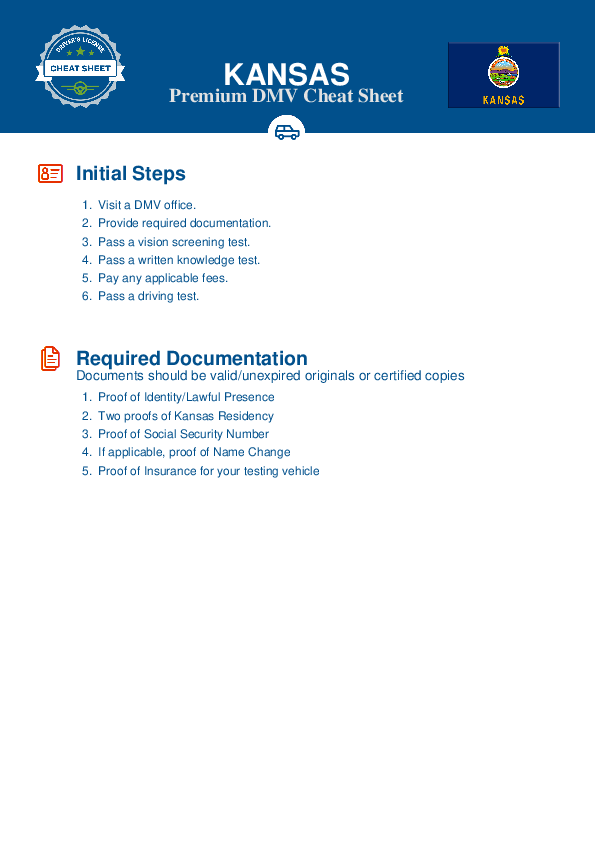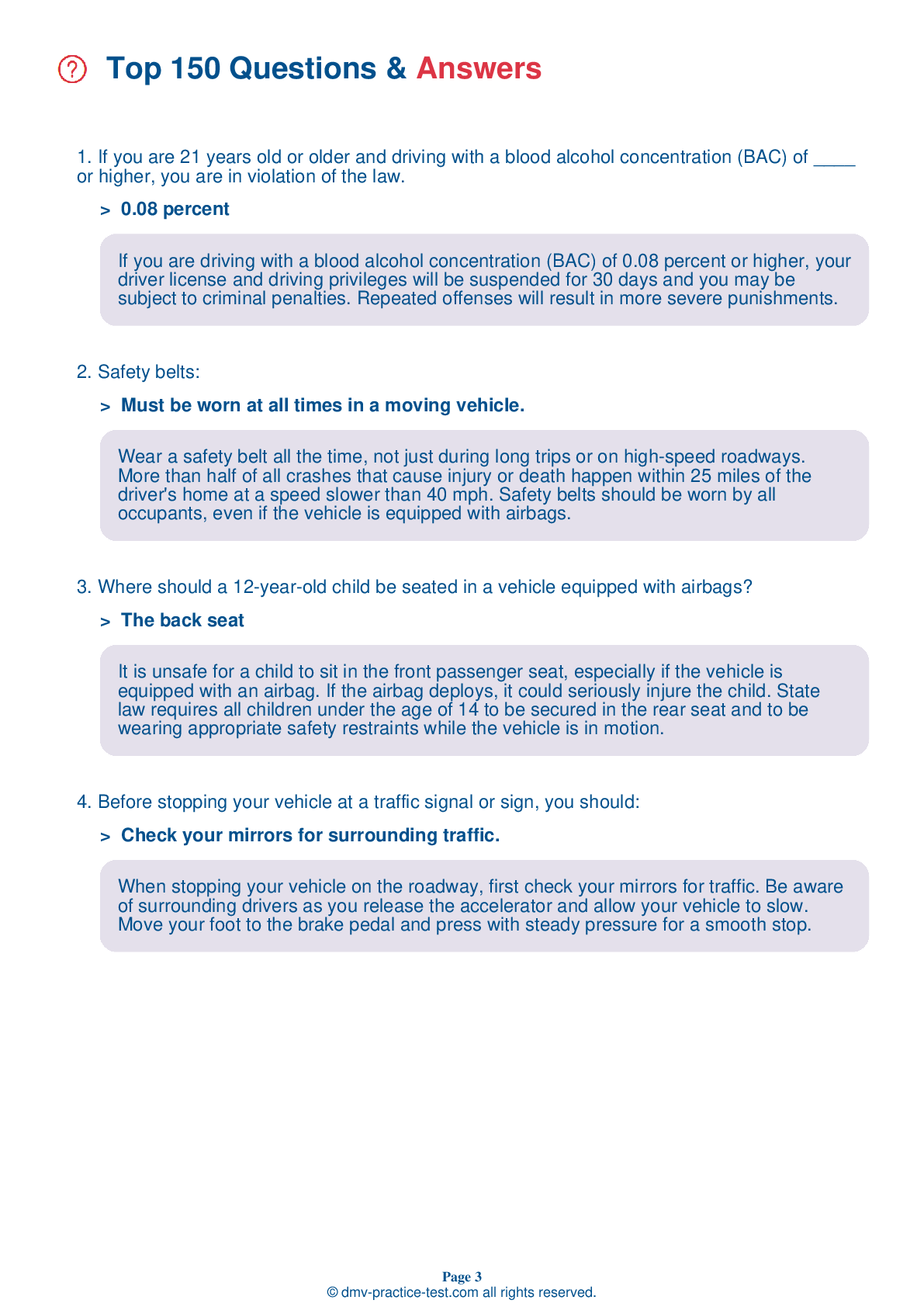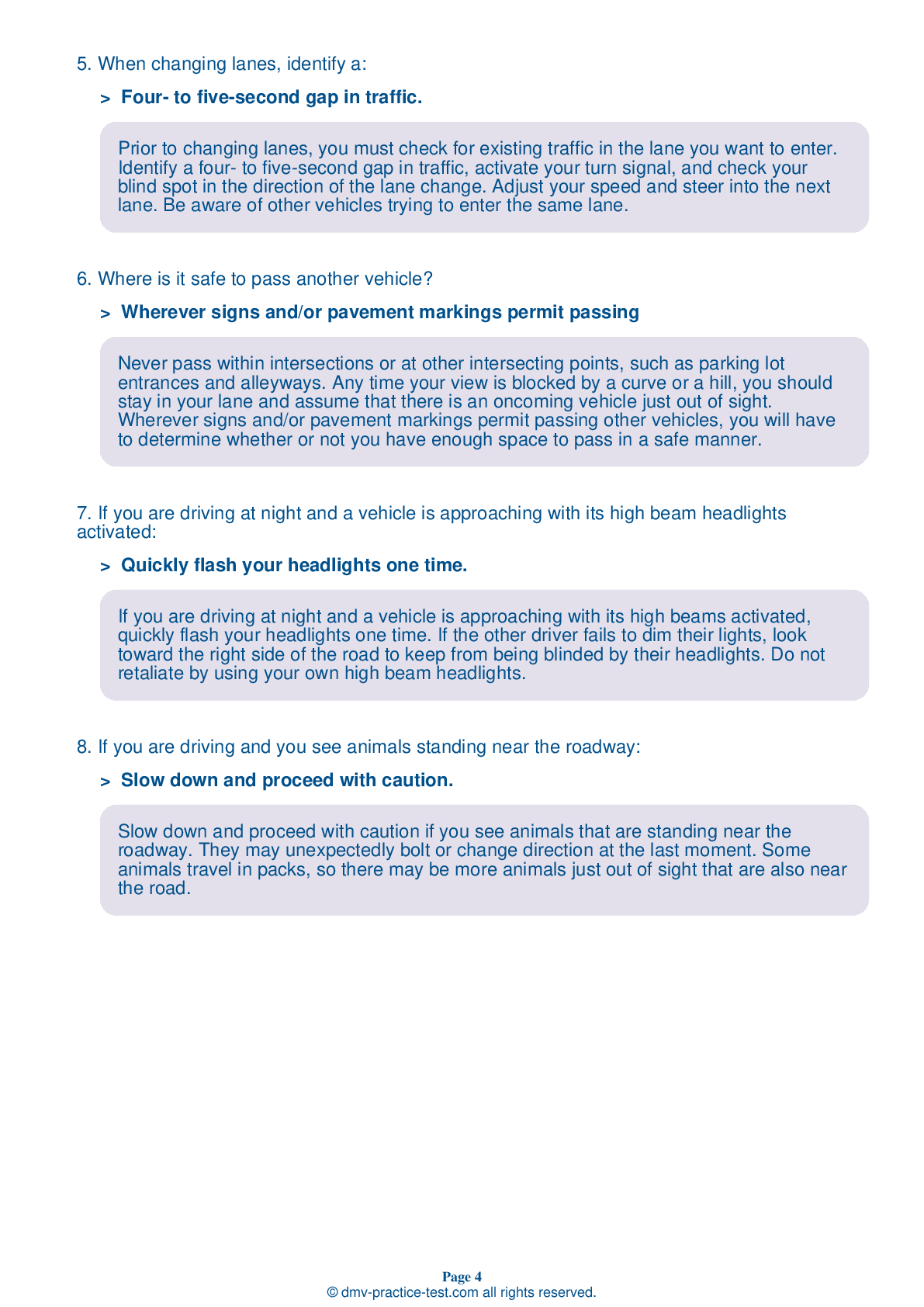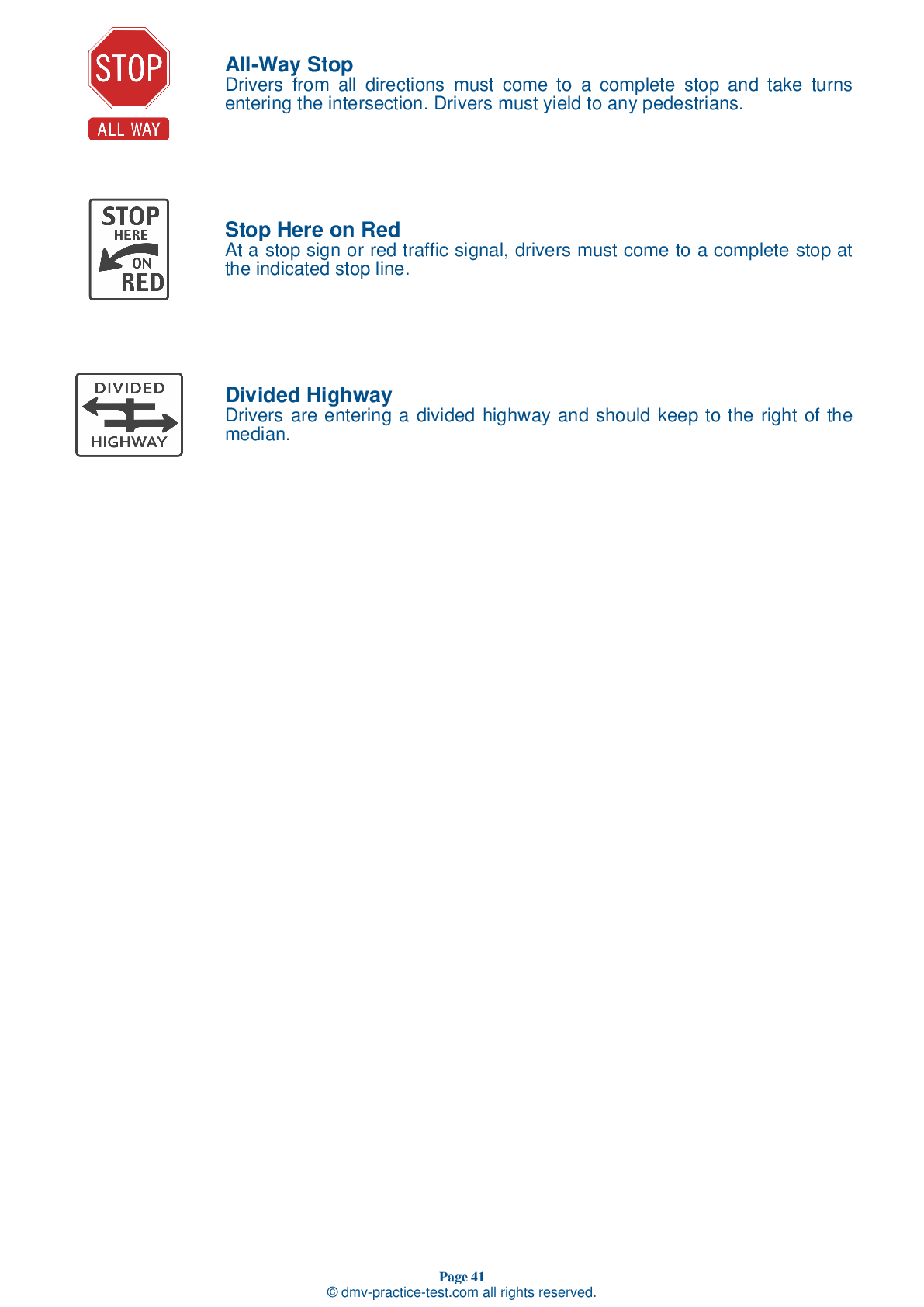FREE Kansas DMV Practice Test #1 Page 3 of 3
In Kansas, the DMV practise tests have been revised for January 2026. It includes questions based on the Kansas Driver Handbook's most essential traffic signals and regulations for 2026. Use actual questions that are very similar (often identical!) to the DMV driving permit test and driver's licence exam to study for the DMV driving permit test and driver's licence exam.
On the practise exam, each question gets a tip and explanation to help you remember the concepts. The written component of the official Kansas DMV test will include questions about traffic rules, traffic signs, and driving statutes, as well as information from the Driver Handbook.
To obtain a passing grade, you must correctly answer 20 of the 25 questions. Take our DMV practise exam to help you prepare for your Kansas instruction permit or driver's licence.
The DMV exam is available in several languages.
Using any kind of testing assistance will result in an automatic fail, and the DMV may take additional action against your driver's licence, so stay away from it.
17 . This sign indicates that:
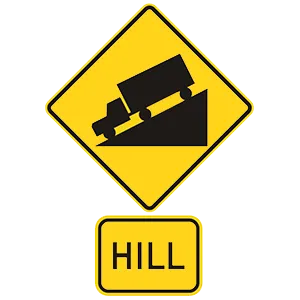
Warning signs are usually yellow with black markings. This sign warns drivers about an upcoming steep hill. Drivers should slow down and be ready to control their speed and protect their brakes from damage.
18 . Drivers turning left must yield to:
Drivers turning left must yield to oncoming vehicles that are driving straight ahead. A turning driver may only proceed when they can safely turn without affecting oncoming traffic.
19 . To see objects in their blind spot when changing lanes, drivers should check:
Your vehicle's blind spots are the areas that you cannot see in your mirrors. Look over the appropriate shoulder to check your blind spot when changing lanes.
20 . When should drivers yield the right-of-way to pedestrians in a crosswalk?
Bring your vehicle to a complete stop at a crosswalk to yield the right-of-way to any vehicle or pedestrian already in the intersection. You may carefully proceed if your lane is completely clear.
21 . As you approach an intersection with a flashing yellow light:
A flashing yellow light means that you should slow down, check for cross traffic, and proceed with caution.
22 . If bad weather makes it difficult for you to see clearly, you should:
When it is difficult to see due to darkness or poor weather, increase your following distance. This will give you more time to react to hazards that you may not see in advance.
23 . This sign tells a driver that:
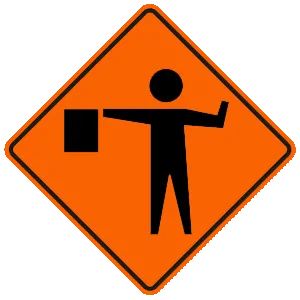
This sign warns that there is a flag person ahead. Always follow directions given by a flagger. Flaggers normally wear orange or yellow vests, yellow-green shirts, or bright jackets. They use paddles and red flags to direct traffic through the work zone and to let workers or construction vehicles cross the road.
24 . When passing another vehicle, it is safe to return to your lane if you:
Before returning to your original lane after passing, you must make sure you are not dangerously close to the vehicle you have just passed. When you can see both of the vehicle's headlights in your rearview mirror, you may have enough room to return to the lane.
25 . If you are driving and a tire suddenly goes flat, you should:
If a tire blows out or suddenly goes flat while you are driving, grip the steering wheel firmly and keep the vehicle aiming straight. Take your foot off the accelerator and do not brake. Allow the vehicle to slow by itself and use the brakes gently, but only if necessary. Pull off the road when it is safe to do so.
See the exact questions that will be on the 2026 Kansas DMV exam.
99.2% of people who use the cheat sheet pass the FIRST TIME
LT gives us an insight on how the cheat sheet provided her with all the study questions she needed before taking her test.
Joe initially studied with the handbook and failed his test, he eventually found us online, studied and pass his test the first time around.
